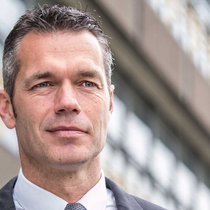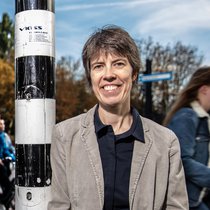It is a challenge to gain a comprehensive understanding of pedestrian and cyclist behavior. Abundant and detailed information about this behavior has not been available until recent years and is still lacking. In comparison, car drivers have fewer choices and are more bound by traffic rules and regulations than pedestrians and cyclists, and are therefore more predictable. For instance, a car driver is more likely to stay in the car lane and observe traffic lights than a pedestrian and cyclist. The fact that pedestrians and cyclists have more degrees of freedom in their behavior, leads to a lack of accurate simulation models and tools that aid planning, design, management and control.
In addition, societal changes make the behavior of pedestrian and cyclists more interesting for scientific investigation. For instance, urbanization increases, walking and cycling for locomotion becomes more attractive and train use more popular, which exerts pressure on public transport stations. The increase of planned or spontaneous events that attract large crowds further make the lack of knowledge on slow modes notable.
The complex behavioral dimensions and interactions between pedestrians and cyclists require a deep understanding of human behavior, advanced modeling techniques and collective behavior.
Prof. Serge Hoogendoorn received the ERC Advanced Grant funding with 2.5 million Euros from the European Research Council his research of traffic theory on pedestrians and cyclists over a time span of 5 years. The grant was established to aid excellent, established researchers conduct innovative and ground-breaking research and the project ALLEGRO (short for: unrAvelLing sLow modE travelinG and tRaffic – with innovative data to a new transportation and traffic theory for pedestrians and bicycles) aimed to formulate such a comprehensive theory of active mode behavior while observing different behavioral levels for pedestrians and cyclists in cities.
“Until now, ALLEGRO has resulted in many novel insights into pedestrian and cyclist behaviour as well as methods to observe and model this behaviour. For instance, we have a much better understanding of what drives people to walk or use their bike, which allows more targeted policy design to increase the share of active mode users.”
Serge Hoogendoorn
Professor & AMS PI
Examples of behavioral levels are walking and cycling operations, activity scheduling and travel behavior as well as knowledge representation and learning. New insights are expected for each of these levels, especially in terms of a) theory/modeling, b) innovative data collection and experimentation, analysis and fusion techniques and c) by social media data analytics, use of augmented reality, remote and crowd sensing.Research is divided into three research themes, reflecting the theoretical, methodological or engineering nature of the project:
- Theme 1: “Transportation and Traffic Flow Theory for Slow Modes in an Urban Context” stood at the heart of the proposal with a focus on the behavioral fundamentals of active mode traffic operations, activity-travel behavior, and network knowledge acquisition and retention
- Theme 2: “Slow Mode Urban Mobility Laboratory” (SM-UML) with a focus on the required laboratory facilities and tools such as data processing tools, open modeling and simulation platform
- Theme 3: “Theory and Laboratory Applications” with focus on two key applications of the newly developed theories and models. One focus will be on fundamental knowledge in the engineering and design fields.
Each theme consisted of various research projects where 8 doctoral and 3 post-doc students each focused on a project as represented by each box in the diagram below.



